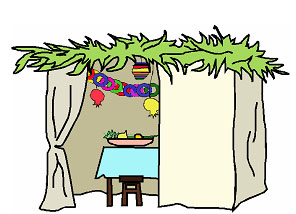The gemara (Horiyus 11a) famously recommends using symbolic foods on Rosh Hashana as an introduction to the new year:
אמר אביי השתא דאמרת סימנא מילתא היא [לעולם] יהא רגיל למיחזי בריש שתא קרא ורוביא כרתי וסילקא ותמרי
The obvious problem is that this looks a lot like the kind of divination described as לא תנחשו that’s forbidden by the Torah (Vayikra 19:26).
My normal approach to such problems includes assessing the source and confirming that the popular or initial reading is actually justified.
In this case, the gemara begins with משיחת מלכים על המעיין (“Kings should be anointed near a wellspring”). This, in fact, doesn’t by any means have to mean that there’s a direct connection between the location they’re using and the success of the royal dynasty. Rather than assuming there’s some magical connection directing human events (for which there’s no source), it’s far simpler to say that a wellspring carries symbolic meaning helpful for impressing on everyone present the importance of, perhaps, maintaining a strong loyalty to the Eternal Source of a king’s legitimacy.
The gemara’s next cases involve actions meant to predict how particular events will turn out. Here, however, the gemara explicitly rejects the thought that the method of divination (lighting a candle in a dark room, monitoring a chicken’s growth, etc) has any actual impact on events:
ולאו מלתא היא דלמא חלשא דעתיה ומיתרע מזליה
“But (these methods are) not valid: (but) perhaps a person will be discouraged by (his interpretation of the result) and he’ll be weakened.”
According to Rashi, the method can’t predict anything, but there’s a genuine (and rational) fear that someone might give too much credibility to a negative outcome and give up hope.
Finally, the gemara says:
השתא דאמרת סימנא מילתא היא [לעולם] יהא רגיל למיחזי בריש שתא קרא ורוביא כרתי וסילקא ותמרי
“Now that you say symbols are legitimate, a person should show at the start of the year” these vegetables.”
These simanim are not more connected to the physical world than the others we’ve discussed. They’re just symbols that can, at best, be used to encourage us and point us towards appropriate behavior.
By contrast, ניחוש, according to R’ Hirsch, is the attempt to bypass the real world’s cause and effect requirements AND to bypass the influence of God on the world. It’s a way of reducing the world to a purely mechanical framework where blindly pushing the right buttons (or reading the right combinations of Torah texts) will force the universe to adjust so you can acquire all knowledge and get everything you want. ניחוש isn’t just about divining the future (which, on its own, can be a problem), but about controlling the future.



